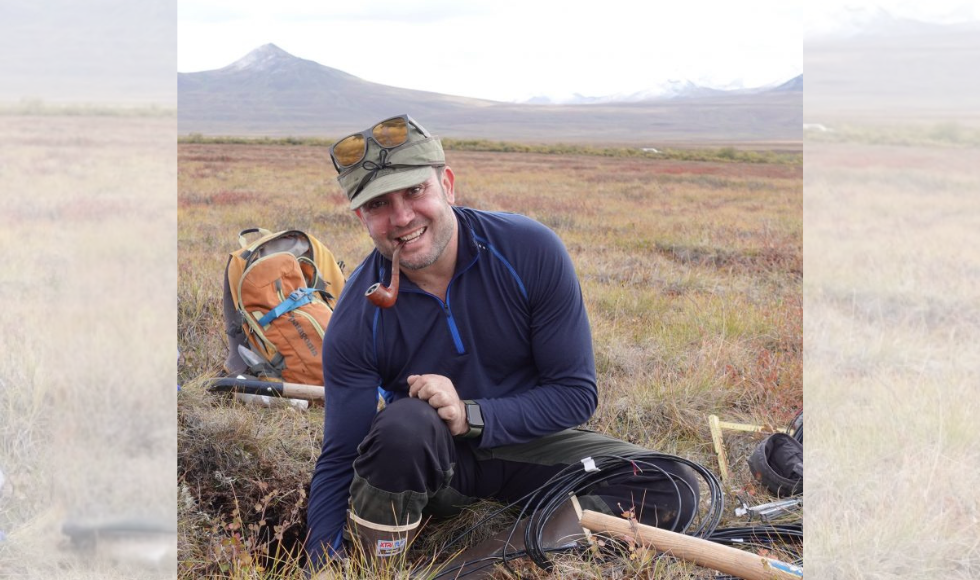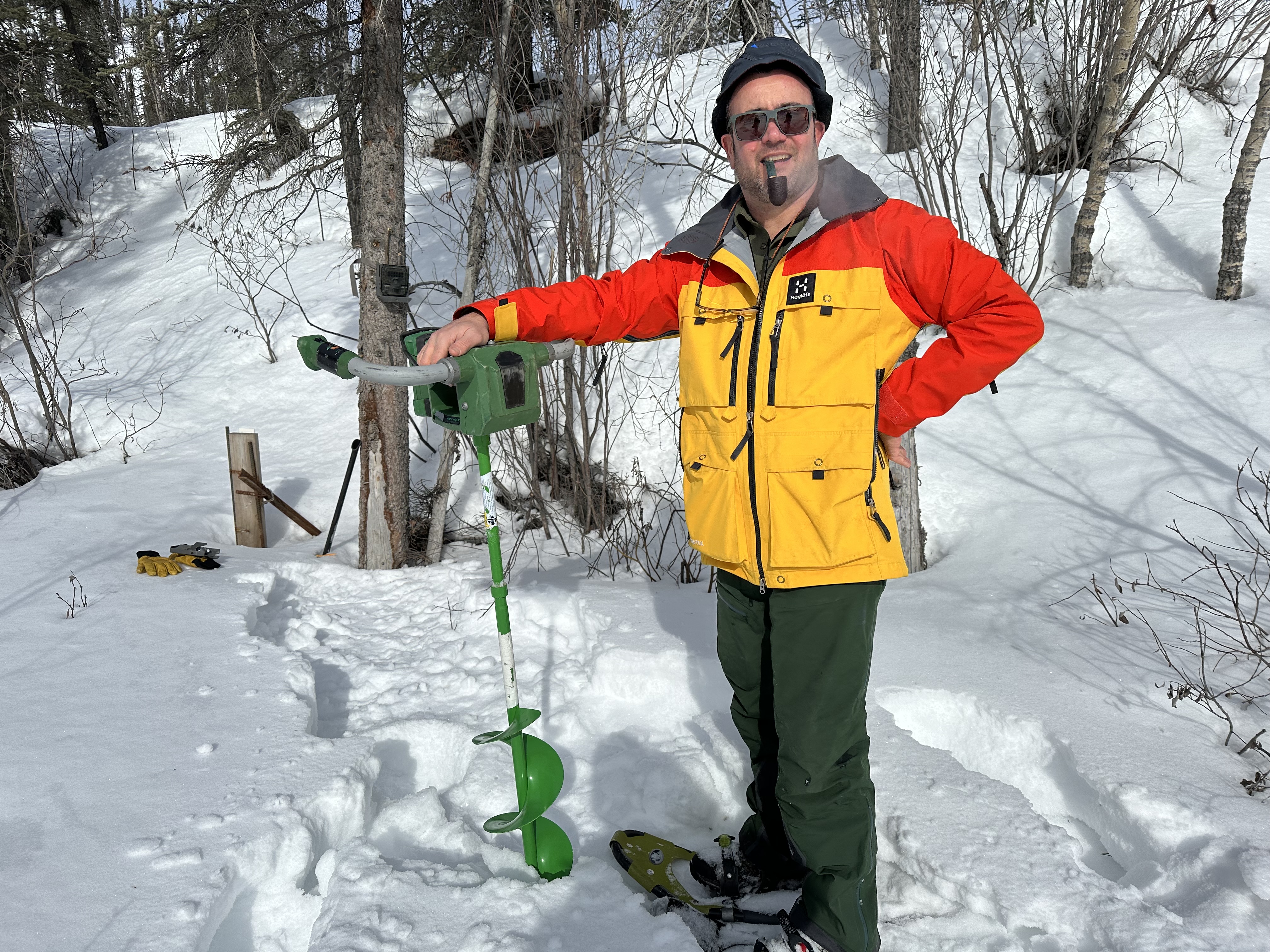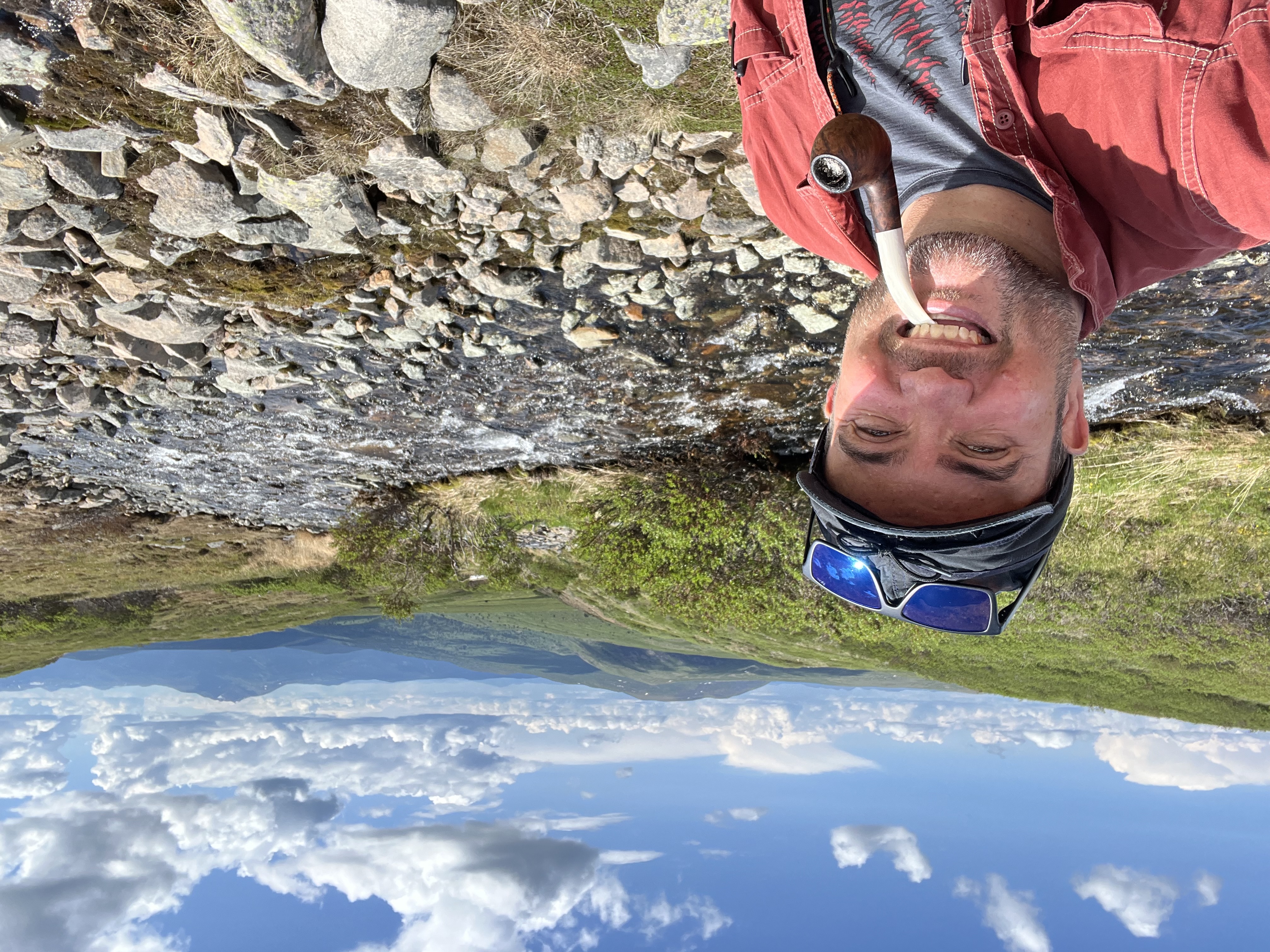Research in the land of the midnight sun

Carey spends around two months of the year in the Yukon. He's dedicated his career to understanding how water quantity and quality change in response to changes in climate.
BY Jay Robb, Faculty of Science
August 12, 2025
Sean Carey’s three-decade run as an environmental scientist studying the Yukon started with a book.
Carey was at the University of Guelph when he read environmentalist Marc Reisner’s Cadillac Desert: The American West and its Disappearing Water.
“Most people ‘love’ the desert by driving through it in air-conditioned cars, ‘experiencing’ its grandeur,” wrote Reisner. “To really experience the desert, you have to march right into its white bowl of sky and shape-contorting heat with your mind on your canteen as if it were your last gallon of gas.”
So that’s what Carey did in his third year of undergrad. He followed professor William Nickling – an expert in desertification – into the Sonoran Desert in the Southwestern United States. It was Carey’s first time doing place-based research and he was hooked.
The desert delivered as Reisner promised – the sky was a white bowl and the heat was shape-contorting for days on end. But Carey didn’t mind at all. “You just learn to adapt. That’s easier said than done but after a few weeks, you’re a desert dweller with the snakes and lizards.”
By the end of their time in the desert, Carey was ready for a change – “somewhere cold and wet sounded nice”.

Nickling told Carey to be careful what he wished for and connected him with a colleague at McMaster, professor Ming-Ko Woo, who had been working in the Arctic since the 1970s.
Woo was taking on grad students to help with research projects. Carey traded scorching temperatures and a desert of sand for frigid cold and a desert of snow and ice.
As Carey’s master’s degree in hydrology wound down, Woo had been invited to join a new research station that was setting up to study watersheds in the Yukon. A call for volunteers went out and Carey jumped at the opportunity that would become his life’s work.
The Yukon is roughly the size of France. About 80 per cent of the territory is wilderness and just 20 per cent of the Yukon’s 47,000 residents live outside the capital city of Whitehorse.
A helicopter dropped Carey off in the middle of nowhere in April 1996. He spent his first day clearing bush with his lone field assistant and building a basecamp. He then spent the next five months living out of a tent off the grid and taking daily measurements. Every three weeks, he was flown to Whitehorse to restock his supplies and stand under a hot shower for a long time.
He returned to the research station for two more summers while he completed his PhD.
While he’s no longer living in a tent and off the grid in the middle of nowhere, Carey’s never fully left the Yukon– he’s there for around two months of the year.
Now a professor in the School of Earth, Environment & Society, he’s dedicated his career to understanding how water quantity and quality change in response to changes in climate, along with its knock-on effects including permafrost thaw and vegetation change.
There are few other places in the world undergoing faster and more extreme changes than the Yukon, and few other researchers in the territory who’ve collected as much water and climate data for as long as Carey.
“I’ve been looking at the Yukon forever. I’ve just kept plugging away.”
Carey divides his time between two sites – the Wolf Creek Research Basin near Whitehorse and the Tombstone Waters Observatory north of Dawson in partnership with the Tr’ondëk Hwëch’in First Nation – one of 14 First Nations in the Yukon. Both observatories are part of the Global Water Futures Observatories, a nationally funded network of freshwater research facilities in Canada supported by the Canada Foundation for Innovation through its Major Science Initiatives Fund.
Carey works with a crew of grad students, and has supervised more than two dozen over the years. Keeping the observatories up and running is job one. The Yukon can be hard place to do fieldwork, says Carey. “You’re working in an environment that eats equipment and chews through everything. When it comes to equipment, you definitely need back-ups to your back-ups.”

When they’re not working at the observatories, Carey and his students are at community centres, schools, campgrounds and government and band councils throughout the Yukon talking about their research and latest findings. It’s also a chance for Carey and his students to listen and learn.
“In the North, it all comes down to relationships,” says Carey. Science outreach and communication are key to building and maintaining strong relationships.
And from those relationships come the big and urgent climate-related questions that drive Carey’s research. All of the critical infrastructure in the Yukon was built for a climate that no longer exists. The data that environmental scientists like Carey are collecting are crucial in helping communities adapt to a warming world.
Carey says all successful fieldwork – whether it’s done halfway around the world or in McMaster’s backyard – comes down to having a good question, a solid plan and the patience to see it through.
The people who live and work in the Yukon supply the questions while Carey, with his decades of experience with place-based research, pulls together the plans and draws from an inexhaustible reserve of patience.
“There’s nowhere else I’d rather be, no one else I’d rather be working with and nothing else I’d rather be studying.”


